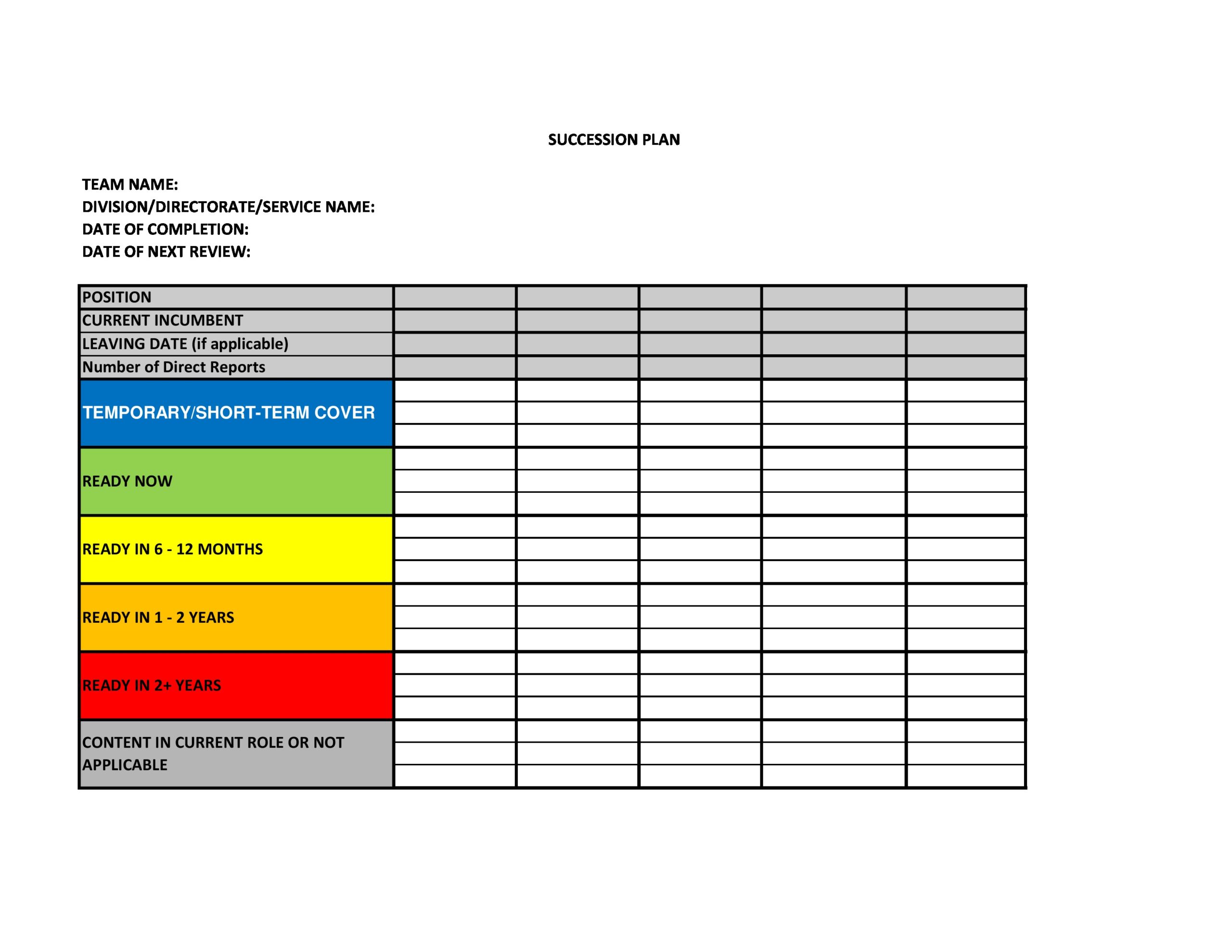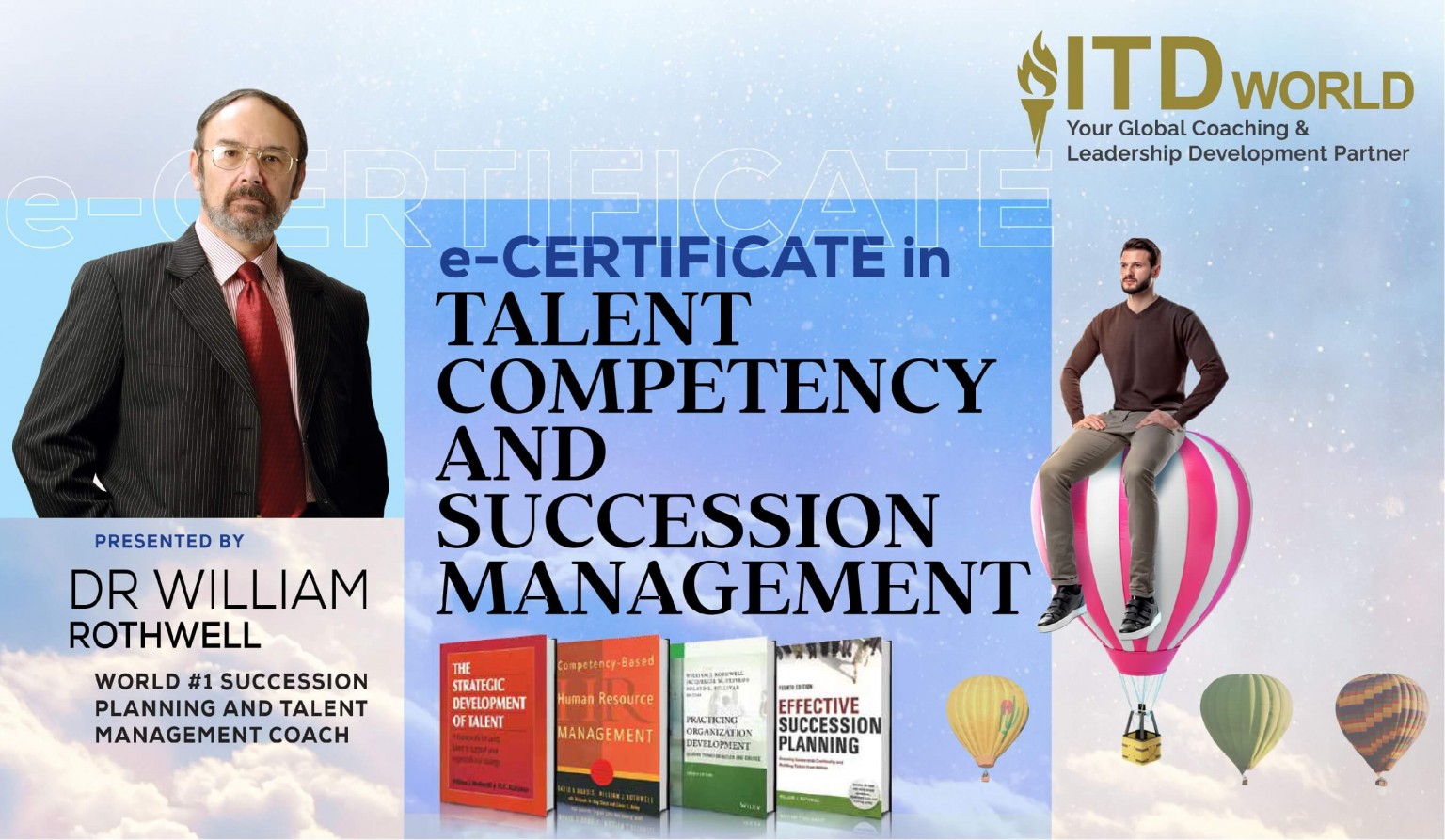Despite being often overlooked, succession planning makes up a fundamental pillar of an organization’s sustained prosperity. It’s the blueprint for preserving the company’s legacy, values, and vision, even as leadership transitions occur.
|
Author: Jonathan M. Pham |
Highlights
- Succession planning (or management) is a deliberate, forward-thinking strategy to identify and nurture talent to ensure the seamless transfer of key roles and responsibilities. Its primary goal is to maintain stability of leadership and operations, prevent disruptions, and preserve organizational knowledge, culture, and expertise.
- Succession planning is a powerful tool for talent development and retention, as it enhances employee engagement and reduces turnover by providing clear career paths. It also builds a strong pipeline of future leaders, strengthening organizational agility and competitiveness.
- The process is broken down into four phases: Identification (pinpointing key roles and assessing the talent pool, often using tools like the 9-box matrix), Development (creating Individual Development Plans, and using coaching, mentoring, and job rotations), Evaluation (tracking progress and reviewing plans), and Transition (implementing the plan and facilitating knowledge transfer).
- Common challenges include a lack of long-term perspective, inadequate resources, and poor leadership development leading to unpreparedness. Best practices involve starting early, understanding market dynamics, thinking outside the box for non-obvious candidates, and using analytics and key performance indicators (KPIs) like Time to Fill Vacancies and Bench Strength to measure success.
What is Succession Planning?
Succession planning (also referred to as succession management) involves a deliberate and forward-thinking approach to identifying and nurturing talent within an organization. A foundational component of effective organizational management, its overarching goal is to ensure the seamless transfer of key roles and responsibilities from current incumbents to their designated successors.
In its essence, succession planning is based on the recognition that change is inevitable. Whether it’s due to retirement, resignations, or unexpected departures, organizations are bound to face transitions in leadership and key positions at some point. The key to mitigating the potential turbulence that such changes may bring about lies in having a plan in place, ready to identify, develop, and deploy the next generation of leaders.
While the concept may appear straightforward, its execution requires strategic thinking, resource allocation, and a commitment to cultivating a strong and adaptable talent pool.
Examples of Succession Planning
Below are some examples of succession planning in various settings:
- Family-owned business: A family-owned manufacturing company identifies the next generation of family members interested in taking over the business. They develop a plan to provide them with the necessary education, training, and experience to assume leadership roles effectively.
- Executive leadership: A multinational corporation lists down high-potential employees within the organization and grooms them for senior leadership positions. They provide them with leadership development programs, mentorship from experienced executives, and opportunities to gain exposure to different business units and functions.
- Technical expertise: A technology company anticipates the retirement of a key software engineer who possesses unique expertise in a critical system. As such, they pick a promising junior engineer and pair them with the retiring expert to transfer knowledge and skills before the transition occurs.

Who is Responsible for Succession Planning?
Succession management is a shared endeavor that involves the coordinated efforts of several key parties, each playing a unique role in ensuring the seamless transition of leadership and talent.
- Board of Directors
For larger organizations, particularly corporations, the Board of Directors holds a pivotal role – they are often responsible for overseeing the entire process, particularly for top-level positions like the CEO and other senior executives. Their responsibilities are not just limited to identifying potential successors – but also involve ensuring that a comprehensive succession plan is in place. In some cases, a specialized committee or external consultants may be appointed to facilitate the process.
- CEO
Many times, the Chief Executive Officer (CEO) would take the lead in succession planning efforts for the senior management team and other key roles. Their jobs typically include identifying high-potential employees, creating and executing development plans, and collaborating with the board, HR, and direct managers to ensure a strategic alignment with the organization’s goals and values.
- Human Resources (HR)
HR professionals are the backbone of the process. They play a crucial role in supporting, facilitating, and executing the plan – by conducting talent assessments to list down potential successors, providing training and development opportunities, and closely monitoring/ evaluating the outcomes.
HR is also responsible for managing succession data, ensuring compliance, and offering guidance to both senior management and direct managers.
- Direct managers
Immediate supervisors or managers are vital in that they often work closely with HR and senior management to ensure the development of employees who have the potential to step into critical roles. Their responsibilities extend to providing feedback, coaching, and mentoring to prepare their successors for a smooth transition.
- Potential successors
Employees identified as potential successors also play an active role – they are the ones responsible for engaging in their own growth and development plans. For this purpose, they are encouraged to participate in training opportunities, seek mentorship and guidance from experienced leaders, and demonstrate a commitment to continuous learning and skill enhancement.
- External partners
Organizations may sometimes choose to engage external partners, such as consultants or training providers, to assist with specific aspects of succession planning. These people can provide specialized expertise in leadership development, offer assessment tools, and design customized training programs. Their contributions are particularly valuable in augmenting the organization’s internal capabilities.
Purposes of Succession Planning
- Ensure stability of leadership and operations
Succession planning is fundamentally about maintaining organizational continuity. When leaders or key employees depart, it prevents disruptions by ensuring there are qualified successors ready to step into vital roles. Otherwise, the longer it takes to replace a senior position, the more likely performance is going to pale compared to other competitors.
Additionally, the process plays a crucial role in preserving the organization’s culture, values, and strategic direction, which are often closely linked to the individuals in leadership positions. This ensures that the company maintains a sense of stability and purpose during transitions, offsetting any vacuums in essential functions.
- Enhance employee engagement & reduce turnover rate
Succession management offers more than just continuity; it serves as a powerful tool for talent development and retention. As high-potential employees are given opportunities for growth and career progression, their morale, engagement, and motivation should soar. When team members see a clear path for advancement within the organization, they are more likely to remain committed and stay with the organization.
- Develop a pipeline of future leaders
Succession planning contributes to identifying and cultivating high-potential employees – hence resulting in a pipeline of qualified individuals ready to step into critical positions when required. As such, organizations may always have the leadership talent needed to achieve their goals, reducing the risk of leadership gaps or skill shortage crises.
- Strengthen organizational knowledge and expertise
Another major benefit is the facilitation of the transfer of knowledge from experienced leaders to their successors. In other words, even if people move on or retire, the organization’s intellectual capital should be wholly preserved.
- Promote a culture of growth
Succession planning fosters a culture of continuous learning and development within the organization. By emphasizing the importance of preparing for the future and investing in employee growth, companies may build up a workplace culture that values talent development and career progression.
- Improve organizational agility
With a strong pipeline of future leaders, businesses are better equipped to adapt more effectively to changing market conditions, technological advancements, and evolving landscapes. In this way, succession planning ensures that the organization has the leadership capacity to navigate challenges and seize new opportunities.
- Enhance reputation and competitiveness
Organizations with robust succession management processes are typically seen as more stable, forward-thinking, and committed to their employees’ growth. As such, this may contribute to enhancing their reputation among stakeholders, attracting top talent, and strengthening their competitive position in the marketplace.
- Creating a diverse and inclusive workforce
Incorporating diversity and inclusion into succession planning strategies helps companies build up a workforce that represents a broad spectrum of backgrounds, experiences, and perspectives. This not only aligns with societal expectations – but also contributes to greater innovation, adaptability, and a broader talent pool.

Benefits of succession planning in HRM
Examples of Successful Succession Planning Practices
- Apple: Apple’s successful succession planning is exemplified by the transition from its iconic founder, Steve Jobs, to Tim Cook. The change was seamless due to Cook’s close collaboration with Jobs over the years. Cook not only inherited the role of CEO but also shared Jobs’ vision, values, and culture, which facilitated continuity in the company’s innovative and profitable endeavors.
- Microsoft: Microsoft’s succession management practices played a pivotal role in the transition from Bill Gates to Steve Ballmer as CEO. Gates groomed Ballmer, who had been with Microsoft since 1980 and possessed an intimate understanding of the company’s products, markets, and strategies. This ensured a smooth handover and continued growth for Microsoft. Additionally, Microsoft’s commitment to grooming talent from within the organization is a testament to the value of identifying and developing potential successors over time.
- IBM: IBM’s long-standing success in succession planning has been a result of its meticulous approach. With just nine CEOs in its history, IBM’s process emphasizes a formal and rigorous method of identifying, developing, and evaluating potential leaders for key roles. As such, the company consistently has a pipeline of competent leaders prepared to take over when necessary. Arvind Krishna, the current CEO, was no exception, having progressed from the senior vice president of cloud and cognitive software.
- General Electric: General Electric’s Jack Welch’s succession marked a significant era for the company – it illustrates the importance of early identification and extensive grooming of potential successors. Welch’s selection as CEO was a result of proactive succession planning, setting a model for the strategic development of future leaders.
- Google: Google’s “three-thirds” hiring model for its HR division, involving talent from traditional HR backgrounds, strategy consulting, and academia, demonstrates its innovative approach to succession planning. By combining data analytics with strategic insight, the company identifies and grooms leaders who align with the company’s unique culture and strategic direction. The involvement of potential successors in strategic planning and mentorship programs underpins the company’s commitment to developing future leaders.
- McCormick & Co: McCormick & Co has ingrained succession planning as a fundamental part of its management process. The company’s approach includes setting a target date for CEO transitions and grooming successors for five years. Involving the board of directors and stakeholders in the succession planning process ensures transparency and alignment with the company’s vision and strategy. The result has been consistent and stable leadership, as exemplified by Robert Lawless’s 11-year tenure, culminating in a seamless transition to Alan Wilson in 2008.
Succession Planning Process
The succession planning process is a strategic framework that can be categorized into four distinct phases, each with a specific set of activities and goals. Here is how it works:
-
Identification
- Determine the scope: The first step has to do with defining the extent of succession planning needed. For instance, a small business may focus on the owner’s replacement, while a large corporation may need to plan for various management and leadership levels.
- Identify key positions: The people in charge must then pinpoint critical roles essential for the company’s success and continuity. This often includes positions like the CEO, CFO, department heads, or any other roles vital to its core functions.
- Establish competency profiles: To evaluate potential successors effectively, competency profiles are developed for each critical position. These profiles outline the competencies, skills, and experience required for successful performance in the role – whether it’s technical knowledge, leadership capability, or strategic acumen.
- Assess talent pool: The organization then evaluates the current employee base to identify those with the potential to fill key positions in the future. This can be done through performance reviews, 360-degree assessments, and consideration of external candidates who meet the qualifications.
-
Development
- Create individual development plans (IDPs): High-potential employees earmarked as potential successors receive tailored Individual Development Plans – which outline specific development goals, training opportunities, and mentorship arrangements designed to prepare them for specific roles within the organization.
- Provide leadership training: Leadership development programs are offered to enhance the skills, knowledge, and competencies of potential successors. These may include workshops, seminars, and online courses focused on leadership skills, decision-making, strategic thinking, and effective communication.
- Encourage coaching & mentoring: Mentorship and coaching are key components of succession planning. Experienced leaders and experts are involved in providing guidance, support, and knowledge transfer to potential successors, helping them develop the necessary skills and insights for future positions.
- Foster job rotations & stretch assignments: Potential successors are given opportunities to gain experience in different roles and expand their skill sets. Job rotations and stretch assignments enable them to apply their skills in new contexts, develop broader perspectives, and prepare for more complex leadership challenges.
-
Evaluation
- Track progress and performance: Regular monitoring of potential successors’ development and readiness for leadership roles is essential. For this purpose, the organization must come up with plans to assess their progress against their IDPs, evaluate their performance in stretch assignments, and gather feedback from mentors and supervisors.
- Evaluate development programs: The effectiveness of training, mentorship, and other development initiatives is evaluated to ensure they meet the needs of potential successors and contribute to their growth. Feedback is gathered from participants, performance metrics are analyzed, and adjustments to programs are made as necessary.
- Conduct regular reviews: Succession plans are regularly reviewed and updated to reflect changes within the organization and the talent pool. This involves reassessing critical positions, identifying new potential successors, and adapting development plans to align with evolving organizational needs.
-
Transition
- Implement succession plans: When key positions become vacant, the organization executes the succession plan to ensure a smooth transition of leadership. This involves formally appointing the identified successor, providing them with necessary support and resources, and communicating the transition to the organization.
- Facilitate knowledge transfer: Formal processes are implemented to capture and pass on critical knowledge from departing leaders to their successors. Examples include mentoring sessions, knowledge-sharing workshops, or the creation of knowledge repositories.
- Provide ongoing support: New leaders receive ongoing support as they transition into their roles, including continued mentorship. Such support helps them navigate the challenges of their new positions, gain confidence, and effectively fulfill their leadership responsibilities.
Succession Planning Methods
Organizations employ a variety of methods and approaches to effectively implement succession planning – either individually or in combination with each other. Some of them are:
- 9-box matrix
The 9-box matrix is a valuable tool for assessing the performance and potential of employees. It categorizes individuals into nine groups based on two key criteria: their current contribution to the organization, and their potential to grow and take on additional responsibilities. These categories range from low performers with limited potential to high performers with significant growth potential.
The matrix is useful for identifying team members who are ready for promotion, those in need of further development, and those who may be at risk of leaving or being terminated. It provides a visual representation of an organization’s talent pool, aiding in more informed decision-making regarding promotions, development, or other talent management strategies.
- Talent pipeline
The talent pipeline approach focuses on creating a pool of qualified candidates for critical roles within the organization. This method involves a structured process that encompasses identifying both current and future organizational needs, mapping out the competencies and skills necessary for each role, sourcing and attracting potential candidates, conducting rigorous screening and assessment, developing and retaining these individuals, and, ultimately, selecting and appointing them into key positions.
With this method, the focus is placed on proactive talent acquisition, development, and retention strategies – thereby ensuring a continuous supply of qualified candidates for pivotal roles.
- Replacement chart
The replacement chart is a visual tool that offers a clear overview of who can replace whom within the organization in case of an emergency or planned departure. It lists the key positions and their current incumbents, along with their potential successors and readiness levels. Readiness levels indicate how well-prepared successors are to assume a role, with categories such as “ready now,” “ready in one year,” or “ready in two years.”
The replacement chart is an essential reference in succession planning, as it provides a concise and readily accessible overview of potential candidates for key roles, helping organizations prepare for unforeseen vacancies or leadership transitions.
- Development plan
A development plan is a detailed document that outlines specific actions and activities designed to enhance an employee’s skills and knowledge, preparing them for a future role within the organization. It is created based on an employee’s career goals, performance feedback, and potential assessments – and includes learning objectives, the methods of learning, a time frame for development, required resources, and evaluation criteria.
Development plans provide a structured and goal-oriented approach to nurturing talent within an organization, ensuring that employees receive the necessary support and guidance to advance in their careers and contribute effectively to the organization’s goals.
Read more: Training Needs Analysis (TNA) – From Insight to Impact
- Bench strength
Bench strength is a critical metric that measures an organization’s ability to fill key positions with qualified internal candidates. It is calculated by dividing the number of potential successors by the number of key positions. A high bench strength indicates a robust talent pool, suggesting that the organization can readily replace its leaders and key personnel. Conversely, a low one indicates a weaker talent pool, raising concerns about the organization’s ability to identify suitable replacements.
Bench strength analysis is a valuable method for evaluating an organization’s succession readiness and highlights the importance of cultivating and retaining internal talent for future leadership roles.

Challenges of Succession Planning
Succession planning is undeniably vital for an organization’s long-term success, but it comes with a set of challenges that can hinder its effectiveness:
- Lack of long-term perspective: Too often, organizations tend to focus on current needs and roles, instead of anticipating future changes and opportunities. Addressing this issue requires the adoption of a forward-thinking approach, aligning their succession plan with their strategic vision and goals. Scenario planning can help identify key roles and skills that will be required in the future, ensuring that the company is prepared for evolving business environments.
- Lack of preparedness: A study by SHRM has revealed that more than 50% of HR professionals do not have a formal succession plan – while another one conducted by HBR showed that over half of organizations lack a CEO contingency plan. As such, they are at grave risk of facing disruptions in leadership transitions. Addressing this challenge requires organizations to acknowledge the importance of succession management – and allocate the necessary resources and attention to ensure preparedness for potential leadership changes.
- Inadequate resources: Succession planning demands dedicated resources, including time, funding, and personnel. Inadequate resource allocation means ineffective implementation, missed opportunities, and compromised leadership continuity.
- Poor leadership development: Many businesses fall short in terms of developing and nurturing their talent pool. They may rely on subjective assessments of performance and potential, use outdated training methods, or fail to monitor and evaluate the progress of successors. Investment in objective and reliable tools and methodologies for measuring and improving the skills and competencies of their candidates (e.g. 9-box matrix) is crucial.
- Like-me bias: Managers often gravitate towards candidates who resemble themselves in terms of background, personality, or style. This results in a lack of diversity and inclusion within the workforce and leadership, potentially limiting creativity, innovation, and adaptability. Organizations need to actively combat this bias by promoting a culture of diversity and inclusion and utilizing unbiased, transparent criteria for evaluating and selecting successors.
- Resistance to change: Occasionally, employees may resist or fear the succession planning process, associating it with retirement, death, disability, or resignation. They might feel threatened by potential successors or be reluctant to share their knowledge and experience. As such, it is essential for organizations to communicate the benefits and importance of knowledge transfer to employees.
- Measuring effectiveness: Measuring the effectiveness of succession planning can be a challenge due to the long-term nature of the process. Organizations must establish metrics to track progress, evaluate development initiatives, and assess their impact on leadership continuity.
Overcoming the aforementioned problems requires a proactive approach, strong leadership commitment, and continuous investment in talent development.
How to Build a Succession Planning Strategy
Building a robust succession management strategy is essential for ensuring an organization’s long-term success and sustainability. Here is a checklist of key factors to consider when developing one:
- Clear vision: A successful program should demonstrate a clear vision and direction that communicates its purpose, goals, and objectives – as well as the roles and responsibilities of all stakeholders. For example, a global tech company may articulate its program’s purpose as to develop future leaders who embody and drive innovation.
- Organizational culture: Ensure that the succession planning strategy supports and reinforces the organization’s cultural principles.
- Scope: Determine the scope of your succession plan – how detailed it should be, and which positions are critical for the organization’s success and continuity. The scope should align with the organization’s vision, mission, values, and goals. Aside from that, establish a set of criteria for selecting successors – including the skills, competencies, and attributes required for each key position, as well as how they can be measured and evaluated.
- Transparent communication: Clearly communicating the succession planning process and expectations to all employees – such as via open forums. Transparency ensures that everyone is aware of the organization’s commitment to nurturing future leaders.
- Stakeholder buy-in: Secure strong leadership commitment to support and drive the process. Additionally, involve employees in the process by seeking their input and feedback. This inclusion fosters a sense of ownership and ensures that diverse perspectives are considered.
- Talent pool: Cultivate a talent base that reflects the diversity of the organization’s customers and markets. A diverse and inclusive pool enhances creativity, innovation, adaptability, reputation, and image. Depending on factors such as availability and suitability, sometimes organizations may want to consider sourcing successors externally instead of from within.
- Flexibility: Customize development plans to meet the unique needs and goals of each candidate. These initiatives should align with the requirements and expectations of each role, providing ample opportunities for learning and growth.
- Smooth transition process: Develop a seamless transition procedure that facilitates the handover of responsibilities from the incumbent to the successor. The process should involve communication, announcements, support, feedback, and recognition to ensure a successful leadership changeover.

Succession planning template
(Source: TemplateLab)
Read more: Stakeholder Management – A Leader’s Engagement Playbook
Succession Planning Best Practices
Implementing effective succession planning best practices can be a game-changer for a company’s long-term success. By following these strategies and avoiding common pitfalls, organizations can build a robust talent pipeline and ensure a smooth transition of leadership:
-
Start early
Succession management should not be a last-minute activity; rather, it should be a continuous, proactive process. Anticipating future needs and challenges helps avoid disruptions, gaps, and conflicts that can arise from sudden or unplanned leadership departures. The earlier the organization starts, the better prepared it will be.
-
Understand market dynamics
Consider external factors that can affect the business environment, such as market trends, customer demands, and competitor actions. This ensures that the organization’s leadership pipeline aligns with the evolving landscape.
For instance, an educational company recognizes that the pace of technological innovation is accelerating, and new technologies are constantly disrupting the training market. To ensure their leadership pipeline is equipped to navigate this dynamic environment, they consider external recruitment to bring in fresh perspectives and expertise – those who are updated on the latest emerging trends.
-
Involve stakeholders
Another principle of succession planning is to engage relevant stakeholders in the process, including senior management, board members, HR professionals, and external consultants. Their buy-in, expertise, and insights can contribute to a more robust plan and foster communication with employees, gaining their feedback and engagement.
-
Think out of the box
Customize your approach to suit the unique characteristics and requirements of each position and situation. Generic or standardized approaches may lead to the oversight of critical role-specific elements.
Additionally, don’t limit your choices to obvious candidates. Sometimes, the best successors may not be readily apparent. Explore a wide range of potential options to find the right fit for each role.
Now, let’s say a manufacturing company is seeking a successor for the position of Chief Operating Officer (COO). The traditional approach would be to focus on candidates with extensive experience in operations management and a proven track record in the manufacturing industry. However, instead of looking only to those with direct experience in operations, this time the company also considers members from other departments who have a strong understanding of the company’s overall business strategy and the ability to collaborate across functions. This change significantly increases their chances of finding the best possible successor for the role.
-
Do not idealize the role
Avoid creating an idealized version of the role that doesn’t match reality. Otherwise, one may come up with unrealistic or irrelevant criteria for selecting/ evaluating successors, as well as potentially ignore challenges/ difficulties associated with the position.
For example, a retail company is looking for a successor for the role of Regional Sales Manager. The organization has a history of high sales growth and a reputation for aggressive sales tactics. In the past, the ideal Regional Sales Manager was seen as a charismatic, hard-charging individual who could drive sales at any cost. That said, given the changing market dynamics and customer preferences, it would be better for them to pick one who demonstrates a more sustainable and customer-centric approach – as well as qualities such as strategic thinking, empathy, and the ability to build long-term relationships.
-
Factor in changes
Change has the power to significantly impact a role’s requirements in the future. Underestimating change would lead to selecting or developing those who are ill-prepared to adapt to new situations or demands.
For instance, a financial services company is planning for the future of the Chief Technology Officer (CTO) role. Traditionally, the CTO focused on maintaining IT infrastructure and ensuring system stability. However, the organization recognizes that the role will evolve significantly in the coming years due to technological advancements and changing customer expectations. As such, change agility becomes a key leadership trait for future CTOs – and anyone who fails to demonstrate adaptability (no matter how experienced they are) is excluded from the selection process.
Read more: Agility Coaching – Navigating Change & Fueling Business Success
-
Invest in training
Provide candidates with ample opportunities for skill and knowledge development – so that they are best prepared for their future roles. Coaching, job rotation, cross-training, and other development methods are invaluable for grooming successors.
Read more: Train the Trainer – Investing in Excellence
-
Make use of analytics
Utilize workforce data and analytics to make data-driven decisions. Analyze workforce demographics, retirement projections, and anticipated organizational changes to predict future leadership needs. Such data points are crucial for identifying potential gaps in the talent pipeline and proactively addressing them.
Some metrics that can be measured to prepare for succession planning are:
- Potential: This measures the ability and motivation of employees to succeed in senior positions in the organization. Tools such as the 9-box grid may help evaluate the potential of employees based on two criteria: their current contribution to the organization, and their future capability to grow and take on more responsibilities.
- Number of high potentials identified for each critical role: In other words, this reflects the size and quality of your talent pool for each key position in the organization.
- Percentage of critical positions filled internally: You can calculate this metric by dividing the number of critical positions filled internally by the total number of critical positions in the organization.
- Risk of loss: Risk of loss measures the probability of losing key employees or candidates due to factors such as retirement, resignation, disability, etc.
-
Leverage positions, not people
Relying solely on a few selected successors can introduce vulnerability and risk. Instead, focus on developing a talent pipeline for critical positions. Ensure you have contingency plans, and consider multiple candidates for key roles. This approach ensures that the organization remains resilient in the face of unexpected changes – as well as encourages healthy competition that potentially drives excellence and innovation.
How to Measure the Success of Succession Planning
Measuring the success of succession management is necessary to assess its effectiveness and ensure progress is being made toward the intended goals. Below is a list of Key Performance Indicators (KPIs) to take into consideration:
- Leadership transition success rate: Track the percentage of leadership transitions that are successfully filled by internal candidates identified through succession planning.
- Time to fill vacancies: Measure the average time it takes to fill critical leadership positions from the time the vacancy occurs to the appointment of a successor.
- Retention of high-potential employees: Monitor the retention rate of high-potential employees identified as potential successors.
- Bench strength: This metric measures how well organizations fill their key positions with qualified internal candidates. It is calculated by dividing the number of potential successors by the number of key positions in the company.
- Employee engagement: Assess employee engagement and satisfaction with succession planning initiatives and their perception of career development opportunities within the organization.
- Organizational performance: Track key organizational performance metrics, such as financial results, customer satisfaction, and employee productivity, to assess the overall impact of the plan.
Aside, other operational metrics such as time to fill, cost per hire, quality of hire, and stakeholder satisfaction may also help assess the success of a succession plan.
Organizations may gather and analyze relevant data from performance reviews, skills inventories, leadership assessments, training records, and engagement surveys to track progress and identify trends. It is recommended to conduct periodic audits of succession planning processes to ensure they are aligned with organizational goals, identify gaps, and make necessary adjustments. In addition, solicit feedback from stakeholders, including senior leaders, potential successors, and HR professionals, to evaluate the effectiveness of such initiatives.

Succession Planning Tools & Resources
Numerous applications and platforms are available to automate and streamline the succession planning process. These tools facilitate the creation and maintenance of succession plans, the assessment and tracking of candidate performance and potential, the management of development opportunities, and the smooth transition of roles. Notable software options include MentorcliQ, Lattice, PerformYard, Paycor, Cornerstone OnDemand, PeopleFluent, and SAP SuccessFactors.
Furthermore, for those seeking to deepen their understanding of succession management, consider exploring the following publications. These resources offer valuable insights into the concepts, methods, and best practices of this critical process:
- Effective Succession Planning: Ensuring Leadership Continuity and Building Talent from Within by William Rothwell: This comprehensive and authoritative guide covers a wide array of topics related to succession planning. It delves into the importance, benefits, and challenges of succession management, outlines the process and model, discusses various tools and techniques, and offers guidance on evaluating and updating the plan. The book is complemented by a CD-ROM containing useful worksheets, assessment tools, and training guides.
- Succession Planning That Works: The Critical Path of Leadership Development by Michael Timms: This practical and step-by-step guide is based on in-depth interviews with senior executives from nearly 50 organizations. It not only identifies the essential components of effective succession planning but also presents a strategic order for their implementation. The book further provides access to 20 downloadable templates and tools, simplifying the process.
- Succession Planning Basics by Christee Atwood: An easily digestible introduction to succession planning, the book covers key topics, including the reasons, benefits, and challenges associated with succession planning. It outlines the fundamental steps and elements of a successful succession plan, highlights common mistakes and pitfalls to avoid, and offers practical tips and best practices. The book is enriched with case studies, examples, checklists, and exercises to enhance comprehension and application.
Discover ITD World’s Succession Planning Certification Program
ITD World’s Certificate in Talent, Competency, and Succession Management (CTCSM) is an invaluable resource for those seeking to master the art of succession planning. Developed by renowned HRD expert, Dr. William J. Rothwell, the program offers a comprehensive curriculum that equips participants with the knowledge and skills to effectively manage talent, identify competencies, and execute succession planning strategies. Its content goes beyond theory, providing practical, real-world applications that potentially drive organizational success.
Contact ITD World today for a FREE consultation!
Other resources you might be interested in:
- The Role of HR in Building Organizational Capability
- HR Business Partner (HRBP): Bridging HR & Business for Remarkable Results
- Instructional Design: Models, Principles & Strategies
- Building a Lasting Leadership Legacy: Beyond the Title


